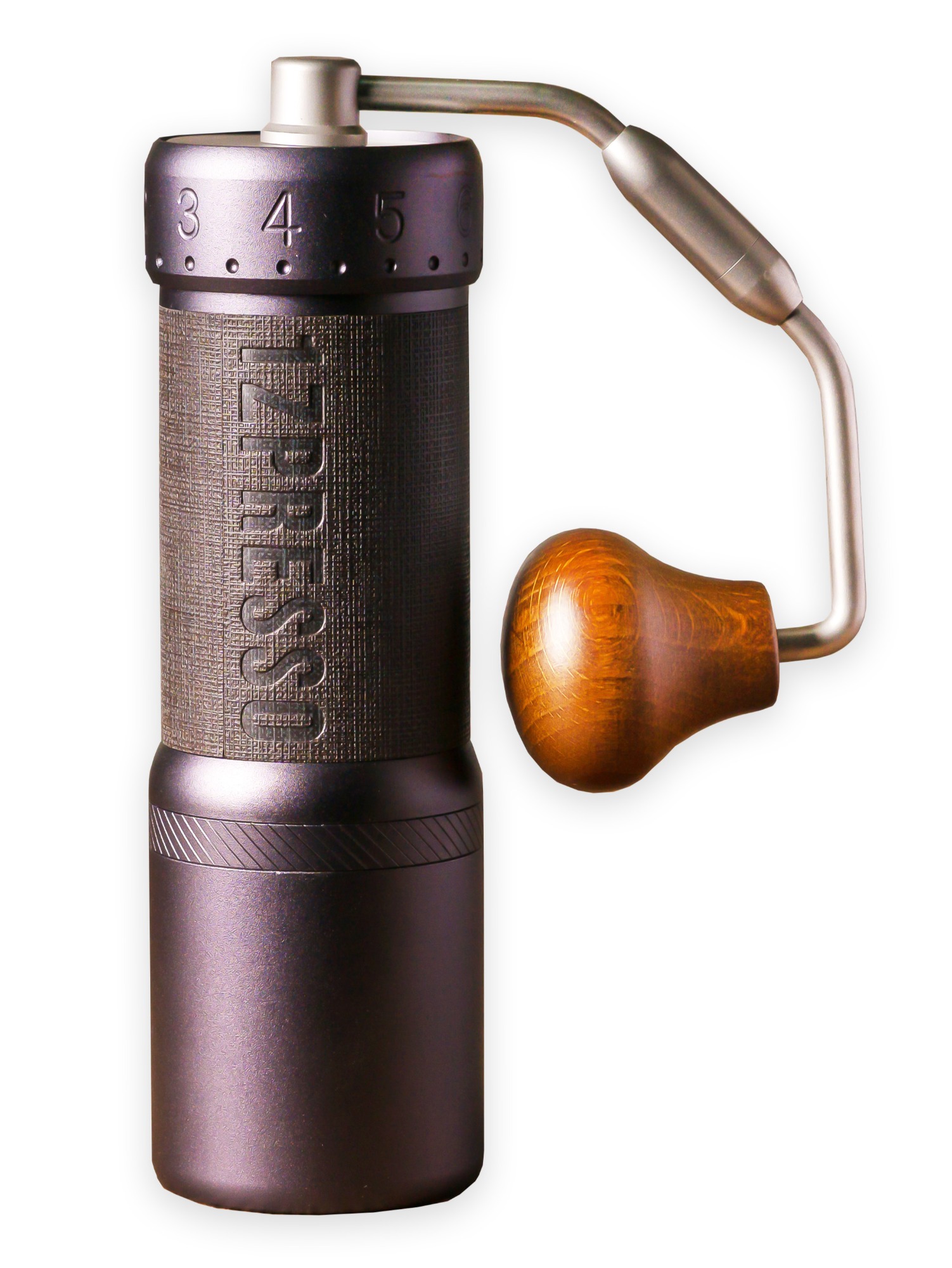Elevate Your Brew Game: 1Zpresso J-Max Espresso Grinder for Coffee Enthusiasts
Wiki Article
Master the Art of Grinding Coffee Beans: A Guide to Coffee Grinders
For coffee fanatics, the process of grinding coffee beans is even more than simply a routine job; it is an art form that can substantially influence the taste and quality of the final mixture. Understanding the nuances of various mill kinds, selecting the ideal work size, and utilizing the right strategies are important steps towards achieving that perfect mug of coffee.Kinds Of Coffee Grinders
There are 3 main types of coffee mills generally made use of by coffee lovers: blade mills, burr mills, and manual mills. Blade grinders are the many standard type, using an easy blade to cut the coffee beans. While they are cost effective and very easy to use, they frequently result in unequal coffee premises due to irregular grinding.Hand-operated mills, as the name suggests, require manual initiative to grind the coffee beans. They are typically favored by those who appreciate the procedure of hand brewing coffee or for those that value portability. Hands-on mills can vary in layout, from simple handheld models to more intricate kitchen counter versions. While they may call for even more effort, hands-on mills offer control over the grinding procedure, enabling individuals to change the grind dimension to their choice. Each sort of coffee grinder has its benefits and optimal usage instances, accommodating the diverse preferences of coffee fanatics.

Selecting the Right Work Dimension
With an understanding of the various sorts of coffee mills, the next essential action in accomplishing the ideal mug of coffee is choosing the appropriate work size. The work dimension plays a significant function in establishing the flavor profile of your coffee (1Zpresso J-Ultra). Different brewing approaches call for details work dimensions to enhance the extraction of tastes from the coffee groundsFor a crude grind, ideal for French press and cool brew techniques, the coffee beans must appear like breadcrumbs, providing a robust and bold flavor. Medium-coarse grinds, suitable for Chemex or Clever Dripper, have a structure comparable to rugged sand, using a well balanced preference.
Medium grinds, commonly utilized in drip coffee makers, have an uniformity looking like normal sand, causing an all-round taste. Great grinds, finest for espresso machines, are comparable to common salt, generating an abundant and intense taste. Extra-fine grinds, utilized in Turkish coffee, are as great as powdered sugar and generate a strong and powerful mixture.
Grinding Methods for Optimal Flavor
To extract the greatest capacity of taste from your coffee beans, grasping appropriate grinding methods is crucial. Uniformity is essential when it involves grinding coffee beans for optimal flavor. Making certain that the coffee beans are ground equally is crucial to achieve a well balanced extraction during the brewing process. Among the essential techniques for improving taste is to adjust the work dimension based investigate this site on the developing technique being made use of. A great grind is optimal for espresso devices, while a coarse grind is more suitable for French press developing. In addition, the grinding time plays a substantial role in taste extraction. Over-grinding can lead to a bitter preference, while under-grinding may lead to a sour taste. It is advised to try out different why not check here work dimensions and brewing times to locate the perfect balance that fits your taste preferences. By focusing on these grinding techniques, you can elevate the flavor account of your coffee and enjoy a much more enjoyable mug every single time.Maintenance and Cleansing Tips

Along with routine cleaning, it is important to examine your mill for any indications of wear or damage. Inspect the blades, burrs, and other elements for any type of dullness or malfunctions. Replace any damaged components immediately to preserve the top quality of your coffee grind. Shop your mill in a completely dry and tidy environment to prevent any type of wetness or dust from affecting its efficiency. By complying with these upkeep and cleansing ideas, you can ensure that your coffee mill continues to deliver delicious fresh ground coffee for years to come.
Troubleshooting Common Grinder Issues


Ensuring your coffee mill operates smoothly requires skilled troubleshooting of typical issues that may occur look these up during its usage. One usual problem with coffee mills is inconsistent grind dimension.
This can take place when oils from the coffee beans build up and block the grinder's chute. To fix this, disassemble the grinder and clean all components extensively, paying unique focus to the chute and burrs.
Lastly, if your mill is producing excessive noise throughout procedure, it could suggest a trouble with the motor or internal components. In such situations, it is advisable to speak with the maker's guidelines for troubleshooting actions or look for professional aid to identify and rectify the issue immediately.
Final Thought
In final thought, grasping the art of grinding coffee beans involves understanding the various kinds of coffee mills, selecting the appropriate work dimension, using correct grinding strategies for optimal flavor, and keeping and cleansing the mill regularly. By following these standards and fixing usual grinder issues, coffee enthusiasts can boost their coffee developing experience and appreciate a scrumptious mug of coffee every single time.Report this wiki page